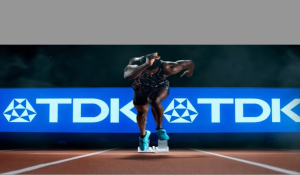With the Summer Olympics coming up soon in Paris, the buzz around the event is already starting to accelerate. Since the FIFA Women’s World Cup, we’re much more aware of how technology, specifically sensors, is being used in sports.
Sensor-based technologies are enabling professionals and nonprofessionals to get more in touch with their performance. Wearable sensors help them develop their skills, record their progress and keep them safe. This also includes individuals, whether they are going for a walk and counting steps, participating in a sport or watching one.
The next trend, however, is cinematic analysis. It is looking at a golf swing or understanding how a ball leaves your hand in a variety of sports and delivering that data to a personal trainer, for example, to analyze it.
Whether for the Olympics, the World Cup or a run around the block, sensors are playing a prominent role in athletic performance, health and sports entertainment.
Advanced sensors
The use of advanced sensors in sports comes down to performance, measuring data quickly and having a high sample rate and a large dynamic range, according to Peter Hartwell, chief technology officer and VP of sensor solutions at TDK InvenSense. “Our InvenSense [MEMS] technology is well-suited for this. We were first to market, for example, with a high-enough dynamic range. We take a gyroscope that was previously the size of a softball and now put it on a silicon chip for under a dollar.”

TDK InvenSense has a long history of use in professional and nonprofessional sports. (Source: TDK InvenSense)
“Most recently, with the soccer ball in the World Cup last year, the combination of sensors in the ball along with radar technology in the playing field all came together,” Hartwell added. “We could understand exactly where that ball was, how it moved and even the controversial, interesting and dramatic moments where uncertainty surrounded the ball being out of the end line or when the star player claims he connected with the ball, but the sensors showed that he never touched it.
“The technology features low power for longer battery life,” he said. “Low power consumption is critical to get through a whole game or match, and you also need something that can survive the power of these athletes and the harsh conditions.”
Examples in sports
What was the most advanced technology at the recent Women’s World Cup? The Adidas OCEANUZ soccer ball. Adidas has designed an official new soccer ball for every World Cup since 1970. For 2023, the OCEANUZ ball was designed for speed. Its sensors track spatial positioning, collect real-time data, monitor player health and enhance the fan experience.
Other advanced sports technology includes the Hawk-Eye camera system that traces a ball’s trajectory during a game, which is used in cricket, football, tennis, rugby union, volleyball and ice hockey, as well as NASCAR and horse racing. The first to receive a FIFA Goal-Line Technology (GLT) license, the technology is well-recognized for its accuracy.
In the 2018 World Cup, Video Assistant Referee (VAR) assisted referees in making decisions that could change the outcome of the game. Using a three-step process, officials identify an incident, provide advice (supported by digital footage of the incident) and make a final decision.
Wearable technology in the form of Electronic Performance and Tracking Systems (EPTS) created a direct line from player to coach via data during the 2018 World Cup in Russia. EPTS allowed access to game footage and player statistics in real time. Its use reduced the chances of player injury while improving general performance.
Is there a downside?
In sports, coaches and fans want to know the health status of players. When Jets quarterback Aaron Rodgers suffered a torn Achilles, technology didn’t deliver the news. With sensors, more subtle injuries and health conditions can be discovered rapidly and the player removed from the game for their own safety.
What would have happened during the 1996 Olympics Games when gymnast Kerri Strug was going for the gold for Team USA? On her first attempt, Strug did not nail the landing. Instead, she heard a snap when she landed, tearing ligaments in her ankle. The video records her second attempt. The approach was flawless: Strug ran at full speed—seemingly impossible for the injury she just suffered. Despite the pain, she launched herself and landed the near-perfect vault, earning gold for Team USA.
She wasn’t removed from the games. The video is a testament to the heart and determination of an athlete.
Asked if today’s sensor technology would have taken her out of the games, Hartwell said: “Yes, I think so. That is one of the risks of the technology. They may have said, ‘You may never walk again if you do this.’ Instead, she and her coach got to make the decision. It is incredibly powerful to watch. This is a good example, albeit an extreme one.”
On the drawing board
For the 2024 Olympics, sensors will continue to make sports more approachable and provide a much better idea of who is winning and why.
In the future, sensing in sports will expand to air quality. “We’ve made a lot of progress against smog, but then you have wildfires and the resulting smoke—even indoor air quality suffers when the fires are especially bad,” Hartwell said.
Advertisement






